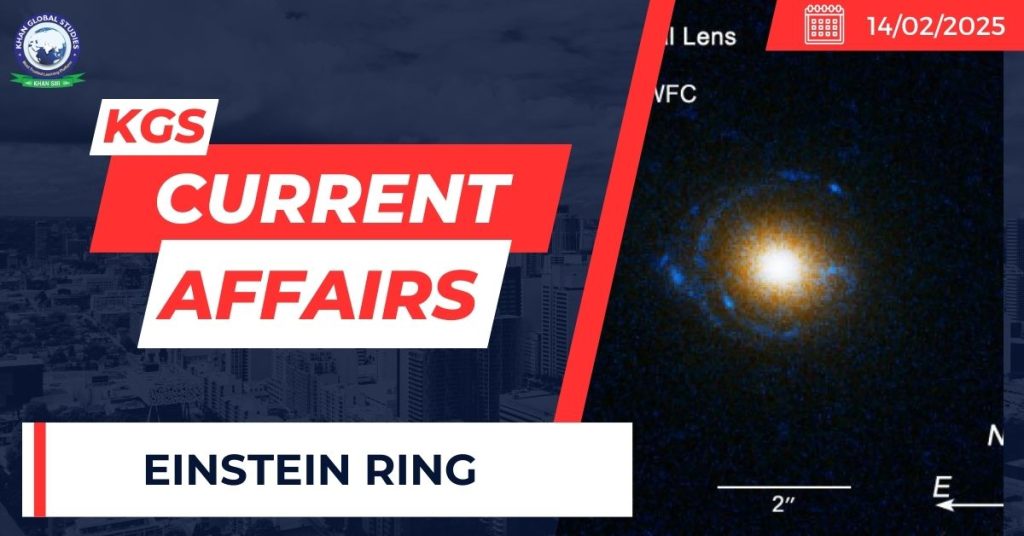Context
- Recently, the European Space Agency’s (ESA) Euclid space telescope has discovered a rare Einstein ring surrounding the galaxy NGC 6505, located about 590 million light-years from Earth.
- Photos taken by Euclid in September 2023, but released recently, show the Einstein ring with a bright central ball of light surrounded by a luminous, cloudy ring.
About the Ring
- Einstein rings are named after physicist and mathematician Albert Einstein, whose general theory of relativity predicted that light could bend and intensify around objects in the universe.
- An Einstein ring is a ring of light around a form of dark matter, galaxy or cluster of galaxies, it is essentially an example of gravitational lensing.

- Gravitational lensing occurs when a massive celestial body such as a galaxy cluster causes a sufficient curvature of spacetime for the path of light around it to be visibly bent.
- The body causing the light to curve is accordingly called a gravitational lens.
- In the case of the newly discovered Einstein ring, NGC 6505 acted as the gravitational lens, distorting and amplifying light from a distant galaxy 4.42 billion light-years away. A light-year equals 9.46 trillion kilometers.
- The first Einstein ring was discovered in 1987, and while several more have been found, their total number remains unknown. They are extremely rare, with less than 1% of galaxies having one.
- Einstein rings are not visible to the naked eye, and can be observed only through space telescopes such as Euclid.
Scientific Importance
- These rings assist scientists in studying dark matter, which, although undetected, is thought to constitute 85% of the universe’s total matter.
- Dark matter doesn’t interact with light but has a gravitational effect, making gravitational lensing sensitive to its presence and allowing indirect detection.
- They can also provide information about the expansion of the universe as the space between the Earth and other galaxies.

